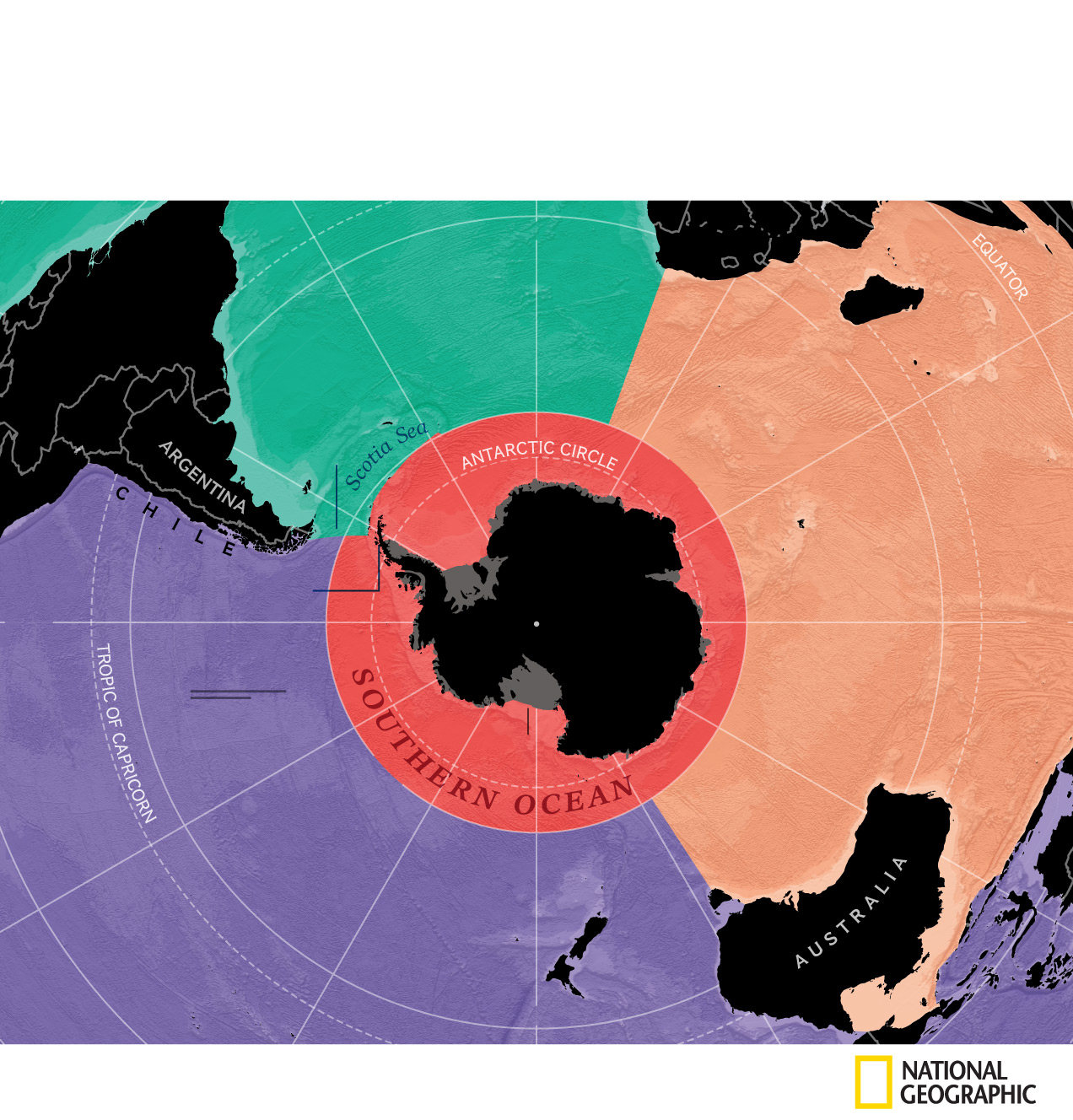National Geographic recently recognized a fifth ocean, and we could be witnessing the beginning of the formation of a sixth
How many oceans can you name? Since National Geographic started making maps in 1915, they have recognized only four oceans: the Atlantic, Pacific, Indian and Arctic (1). However, on June 8, 2021, or World Oceans Day, National Geographic officially recognized the Southern Ocean as the fifth ocean (1). Moreover, scientists are also watching the Afar Region in Africa for the formation of a possible sixth ocean (2).
The Southern Ocean surrounds Antarctica and is bounded by the 60º south latitude line as its northern boundary (1). The Southern Ocean was formed 34 million years ago when Antarctica separated from South America, and it is the only ocean that touches three other oceans (1). It is also the only ocean that encircles a continent, rather than continents surrounding an ocean (1).

National Geographic determined that the Southern Ocean could be recognized as a new ocean because it has enough distinct qualities from other oceans. The water in the Southern Ocean is colder and less salty than the water to its North. It is also home to unique marine ecosystems that include whales, penguins and seals; National Geographic’s decision to recognize the Southern Ocean will help drive attention to these conservation efforts specifically for these animals (1). The Southern Ocean, much like other oceans, has been harmed by human activities including industrial fishing, which has led to a scarcity of krill, Patagonian toothfish (marketed as Chilean Sea bass), and other foods (1). It is imperative that the Southern Ocean is protected because the ocean itself and its current, the Antarctic Circumpolar Current (ACC), provide numerous benefits to the planet (1). The ACC circulates water from the Atlantic, Pacific and Indian oceans to provide heat to the planet, and the Southern Ocean’s cold waters sink to the ocean floor and store carbon (1).
While the Southern Ocean was formed billions of years ago, it is possible we are now witnessing the beginning of the formation of a new ocean in the Afar region near Erta Ale, Ethiopia (2). This region, next to the Red Sea, is dry, desolate, filled with volcanoes, and covered in lava. The Afar region is situated at the meeting point of three tectonic plates, the Nubian, Somali, and Arabian; the rifts between these plates are causing the continent of Africa to tear apart (2). This tectonic transition could form a new ocean basin, very similar to how the Southern Ocean formed. However, such a rift does not always cause continents to separate. For example, North America is still whole despite the midcontinental rift that occurred 1.1 billion years ago (1). It is not an everyday occurrence that we recognize a fifth ocean; it will be billions of years before we know if a sixth ocean forms in Africa.

Sources:
- Gibbens, S. (2021, June 8). There’s a new ocean now—can you name all 5? National Geographic. Retrieved from https://www.nationalgeographic.com/environment/article/theres-a-new-ocean-now-can-you-name-all-five-southern-ocean
- Klemetti, E. (2020, May 8). Are We Seeing a New Ocean Starting to Form in Africa? American Geophysical Union. Retrieved from https://eos.org/articles/are-we-seeing-a-new-ocean-starting-to-form-in-africa

